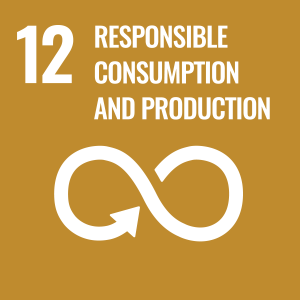
Professor Chanaka Jayawardhena
About
Biography
I currently hold the position of Professor of Marketing at Surrey Business School (SBS) and serve as the Head of the Strategy, Marketing and International Business (SMIB) discipline. My academic journey has included a diverse range of roles and experiences.
Before joining Surrey Business School in February 2020, I held the position of Professor of Marketing at the University of Hull. Prior to that, I contributed to the academic community through faculty positions at the University of Loughborough, DeMontfort University, and the University of Moratuwa in Sri Lanka.
My academic background also includes the distinction of being a former Cambridge Commonwealth Scholar. Beyond my academic pursuits, I have applied my expertise as a consultant and adviser to governmental bodies and have collaborated with numerous public and private organizations, further enriching my professional experience and contributions to the field of marketing.
University roles and responsibilities
- Head of Department - Department of Marketing & Retail Management
- Member of Senior Management Team
- Chair in Marketing
- REF Output Review Panel
- Personal/Academic Tutor
My qualifications
Previous roles
ResearchResearch interests
My research investigates pressing questions at the intersection of digital technology, consumer behaviour, and marketing strategy. My work is organised into three interconnected streams:
- Digital & Virtual Consumption: I examine how consumers interact with digital environments, including digital media, AI assistants, and immersive technologies. A key focus is understanding how organisations can leverage these platforms and tools—such as AI and AR—to design and enhance customer experiences.
- Customer Relationships & eWOM: This stream explores how customers build and maintain relationships with brands over time. I have a particular interest in the role of social media and electronic word-of-mouth (eWOM) in shaping these dynamics. My work in this area includes guest editing a special issue on eWOM for the Journal of Business Research.
- Consumption Decisions & Ethics: My third stream focuses on the consumer decision-making process and the resulting customer experience. I investigate the drivers of consumption choices and the nuances of customer engagement. A central and growing component of this research is the critical examination of sustainability and ethical consumption practices.
Research interests
My research investigates pressing questions at the intersection of digital technology, consumer behaviour, and marketing strategy. My work is organised into three interconnected streams:
- Digital & Virtual Consumption: I examine how consumers interact with digital environments, including digital media, AI assistants, and immersive technologies. A key focus is understanding how organisations can leverage these platforms and tools—such as AI and AR—to design and enhance customer experiences.
- Customer Relationships & eWOM: This stream explores how customers build and maintain relationships with brands over time. I have a particular interest in the role of social media and electronic word-of-mouth (eWOM) in shaping these dynamics. My work in this area includes guest editing a special issue on eWOM for the Journal of Business Research.
- Consumption Decisions & Ethics: My third stream focuses on the consumer decision-making process and the resulting customer experience. I investigate the drivers of consumption choices and the nuances of customer engagement. A central and growing component of this research is the critical examination of sustainability and ethical consumption practices.
Supervision
Postgraduate research supervision
Postgraduate Research Supervision
I welcome inquiries from outstanding prospective PhD students whose research interests align with my own (please see my research tab for details). For an informal discussion, please email your CV and a draft research proposal outlining your key question, conceptual framework, and proposed methodology.
Current Doctoral Students:
I am currently supervising three PhD candidates:
- Heer Paleja – Her PhD examines the intersection between consumption choices and service robots
- Ahmed ELKattan – His PhD examines the intersection between emotional states and service robots/AI
- Saba'A H Al Hadidi - Her PhD examines the intersection between consumption choices and ethical/sustainable advertising
Completed Supervisions:
Throughout my career, I have successfully supervised over twenty PhD students to completion as a first supervisor. A selection of my past supervisees includes:
- Mohamed Mohamed “The Sharing Economy Unveiled: Externalities, Regulation, and the Path to Compliance” PhD 2025(Now a Lecturer in Marketing at the University of Southampton)
- Murat Aksoy, “Human brain responses to fast-moving consumer goods using electroencephalography”, PhD 2024 (Now a Lecturer in Marketing at the University of Hull)
- Asheeabee R Shaheen Hosany, “Children’s Influence, Sustainability, Resource, Scarcity and Family Consumption” PhD 2022 (Now a Lecturer in Marketing at Royal Holloway, University of London).
- Shadi Abdulaziz Badawood, “The Impact of Smartphone News Engagement on Consumer Response to Advertising”, PhD 2021 (Now an Assistant Professor in Marketing at Najran University)
- Shenaz Rangwala, “An examination of the consumption practices of new middle-class Indian women” PhD 2020 (Now a Lecturer in Marketing at Northumbria University).
- Haidy Nasser Ashour, “Examining Consumers’ Intention, Attitudes and Neutralisation Beliefs within Ethically Driven Consumption Episodes” PhD 2020 (Now a Lecturer in Marketing at the London College of Fashion)
- Abdullah S Aloufi, “The Impact of Banks’ Strategies for Managing Customer Misbehaviour on Other Customers”, PhD 2020 (Now an Assistant Professor of Marketing, Taif University, KSA)
- Badra Sandamali Galdolage, “Value Co-Creation and Total Customer Experience in Self Service Technologies: An investigation of adoption, roles, self-directed learning and practices”, PhD 2018 (Now a Senior lecturer in University of Sri Jayewardenepura, Sri Lanka)
- Abdullah M Alomran, “Perceived Risk in Technology Adoption: The Context of the Use of Internet Distribution Systems”, PhD 2018 (Now an Assistant Professor of Marketing, Taiba University, KSA )
- Ernest Emeka Izogo, “Online Customer Experience in an Emerging e-Retailing Market”, PhD 2017 (Now a Lecturer at Ebonyi State University, Abakaliki, Nigeria & Post Doctoral Researcher at University of Hull, UK]
- Hongfei Liu, “Investigation into Impact of Social Media on Creating Customer Engagement”, PhD 2017 (Now a Lecturer at Essex University, UK)
- Mohammad Masrurul Mowla, “Host Community Participation as a Competitive Advantage in Tourism Destination Marketing”, PhD, 2017 (Now an Associate Professor at International Islamic University Chittagong, Bangladesh)
- Mohamed Elsharnouby, “Enhancing Customer-Brand Relationships through Spokes Avatars: The Role of Relationship Orientation”, PhD 2015 (Now a Lecturer in University of Cairo, Egypt)
- Alaa ElBedweihy, “Consumer-Brand Identification: Scale Development and Validation”, PhD 2015 (Now a Lecturer in University of Cairo, Egypt)
- Ibrahim S Alotaibi, “ Beyond Mobile Advertising: an exploratory study of customer engagement and empowerment behaviour via mobile devices in relation to marketing communication campaigns in Saudi Arabia”, PhD 2015 (Now an Assistant Professor of Marketing, Taiba University, KSA )
- Zyad Alzaydi, “The impact of quality control initiatives, customer integration and customer co-production on service quality performance: An empirical investigation”, PhD 2015, (Now an Assistant Professor of Marketing, Albaha university, KSA )
- Dan Cao, “Determinants of Fashion Orientation: Conceptual Development and Empirical Examination”, PhD 2014 (Now an Assistant Professor in Zhejiang industrial and business university, China)
- Jie Wu, “Equestrian tourists’ motivation, involvement and behavioural intentions: Structural equation modelling analysis”, PhD 2014 [Now an entrepreneur]
- Ali H Al-hajla, “Brand Personality measurement scale for the Service industry: A study of the GCC states”, PhD 2013 (Now an Assistant Professor of Marketing, Taiba University, KSA )
- MeiMei Wu, “Investigating the Adoption of Banking Services Delivered Over Remote Channels: The Case of Chinese Internet Banking Customers”, PhD 2012 [Now an Interior Designer]
- Kemefasu Ifie, Title: “An investigation of the antecedents of service delivery and organisational performance: a service culture perspective”, PhD 2010 (Now a Senior lecturer at Loughborough University, UK)
In addition to my supervisory role, I have served as an external examiner for more than thirty PhD theses across the UK and internationally.
Completed postgraduate research projects I have supervised
Teaching
Teaching Philosophy
My approach to teaching is grounded in a commitment to bridging theoretical knowledge with practical application. I believe in creating a dynamic and inclusive learning environment where students are equipped not only with current marketing theory but also with the skills to apply it in real-world contexts.
To achieve this, I actively integrate findings from my own research and my professional consulting work with companies into the curriculum. This ensures that the learning material is both academically rigorous and enriched with contemporary industry insights. I foster an interactive and collaborative classroom atmosphere, emphasizing dialogue and critical thinking. Being responsive to the diverse needs of each student cohort is paramount to me, and I continually adapt my teaching methods to create an effective and supportive learning experience for all.
Teaching Responsibilities
I am responsible for teaching and coordinating courses across undergraduate, postgraduate, and MBA levels. My current portfolio includes:
Undergraduate (UG)
- MAN3116 - Business Research Project
Postgraduate (PG)
- MANM435 - Services and Relationship Marketing
- MANM388 - Dissertation (Marketing and Retail Management)
MBA
- MANM612 - Marketing Strategy in the Digital Era
Sustainable development goals
My research interests are related to the following:




Publications
This work explores the dynamic interplay of gender and consumption among middle-class women in post-liberalization India. Through thirty-three semi-structured interviews, it examines how Indian women reshape gender norms in the context of self, family, and society, revealing the interplay between work and consumption serving as a medium for asserting autonomy while concurrently reinforcing traditional gender roles. Utilizing Judith Butler's gender performativity theory, it argues that middle-class women engage in a complex performance of gender through their economic agency, which both challenges and perpetuates existing patriarchal structures. Findings highlight a nuanced landscape where the intertwining of employment and consumerism enables women to redefine their gender roles, yet often within the confines of existing societal norms. This study contributes to the broader scholarship on gender work, particularly in non-Western contexts, by illustrating the intricate ways in which women of color are redefining gender roles amid the pressures of globalization and traditional societal expectations. The paper's insights have significant implications for understanding gender dynamics in urban India and informing policies aimed at promoting gender equality.
Purpose: Avatars have become increasingly prevalent on brand websites, yet their impact on consumers’ use of these sites remains underexplored. The current study focuses on avatars, which are three-dimensional animated graphical web interfaces that verbally aid the brand stakeholders (e.g., customers, employees, and suppliers). Avatars provide administrative and technical information through the brand website. Drawing upon the stimuli-organism-response (S-O-R) paradigm, this research examines the impact of avatars as an information provision and interacting tool (vs. a traditional format) on consumers’ perceptions, attitudes, and behaviors toward a brand. It also investigates the roles of familiarity with avatar use and the language used by an avatar in shaping consumers’ responses.Design/methodology/approach: Across two laboratory experiments, the authors examined and confirmed causal relationships between the use of avatars (vs. a traditional format) on a website and attitudinal and behavioral constructs.Findings: We show that avatars (vs. written information) had a significant effect on controlling information. The users in our experiments had greater control over the information provided when it was presented as text on a website compared to the case of avatars “telling” the information. Different languages and familiarity with avatar use also affected the consumers’ hedonism in terms of website use.Originality: We advance understanding of avatar use in website design, particularly avatars’ verbal interaction, in shaping consumers’ cognitive, affective, attitudinal, and behavioral response and add important empirical evidence to the growing body of research and practices involving using avatars in interactive marketing.
Despite increased research into electronic word of mouth (eWOM) in the hospitality sector, the role of emotion in consumers' eWOM behavior remains underexplored. Highlighting media differences in eWOM, we apply online disinhibition effect and social sharing of emotion theory to investigate the consequences of consumption emotion for consumers' eWOM behavior and emotion-specific media preferences (social networking sites [SNSs] vs. review sites). Experimental results identify emotional intensity as the key driver of consumers' eWOM-giving intention on both media, whereas emotional valence shows media-specific effects on eWOM-giving. Satisfaction demonstrates a 'positivity bias' in consumers' eWOM-giving, but only on SNSs. Expressive suppression also regulates the impact of emotional intensity on eWOM-giving intention. We push the boundaries of valence-centered assertions in eWOM research and advance theoretical understanding of consumers' eWOM behavior through the lenses of emotion and media differences. Our findings have important implications for practitioners in the hospitality sector and for eWOM media providers.
Purpose - Based on the foundations of the schema theory, the elaboration likelihood model, andcustomer experience literature, this research examines how the interplay between a consumer’sprevious shopping experience(s) and perceived credibility of negative online word-of-mouthleads to improved consumer-firm relationship quality.Design/methodology/approach – We utilised series of scenario-based experiments (N = 918) totest our research hypotheses.Findings – We show that a focal customer’s previous shopping experiences attenuate theperceived credibility of negative word-of-mouth on social media by other customers, which inturn weakens consumer-firm relationship quality. We also show that positive and negativeperceptual experiences are asymmetric.Research limitations/implications – First, the online shopping experiences described in theexperimental scenarios were generic and did not refer to any particular product/service. Thus,calibrating products and services into categories, and studying how product type differencesimpact online shopping experiences warrant further research.Practical implications – From a practical perspective, we demonstrate that not only doesenhancing consumer-firm relationship quality demand meticulous integration of consumers'website and social media experiences, in positive vs. negative perception scenarios, relationshipquality wane as review frequency increases.Originality/value – We contribute significant insight to the existing literature by specificallyadopting the premise that consumers’ previous online shopping experience(s) will influence howcredibly they will perceive negative online WOM posted on social media.
Consumers have always had a propensity to share their personal experiences of products/services/brands with others. Marketers have long appreciated the importance of such user-generated content and Ernest Dichter coined the term ‘word of mouth’ (WOM) advertising in 1966. In online environments, electronic word of mouth (eWOM) has become important to consumers, marketing academics and marketing practitioners. In an era where technology is ever-developing, the Internet is increasingly playing a vital role in our lives. In 2021, the number of Internet users had reached 4.54 billion, accounting for 59% of the world’s population (wearesocial, 2021). It is undeniable that the Internet has had a very significant influence on people’s lives, thereby also leading to an evolution in customers’ consumption habits (Liu et al., 2020; Yoo et al., 2013). Customers are now able to shop, communicate, acquire information and share thoughts without leaving their home, simply by moving their fingers (Hennig-Thurau et al., 2004; Jacobsen & Munar, 2012; Zhang et al., 2011). Formally put, eWOM refers to any positive or negative statement made by potential, actual, or former customers about a product or company via the Internet (Hennig-Thurau et al., 2004; Ryan & Jones, 2009). According to a definition by Hennig-Thurau et al. (2004), any product/service/brand-related user generated content (UGC) can be seen as eWOM information. Meanwhile, eWOM also exists in most online media that support users in generating their own content. Therefore, eWOM is a very broad concept that exists in consumers’ generation of product/service/brand-related content in multiple online media. It is apparent that eWOM is a near-universal trend that has profoundly influenced the customer decision-making cycle and business performance. This chapter conceptualises and defines eWOM, highlighting the theoretical foci. Subsequently, the motivations of consumers’ eWOM engagement are examined, followed by categories of eWOM-related theories. The chapter concludes by presenting a contemporary view of the concept.
The study explores how consumer–brand value congruence affects the quality of consumer relationships and drives the propensity to leave and consumers’ voluntary performance. It also examines how the quality of consumer–brand relationships mediates the relationships between value congruence and both propensity to leave and consumer voluntary performance. The study also examines the moderating role of relationship length and consumer age. Data from an online survey of 371 consumers drawn from contrasting service contexts (restaurants and hospitals) were collected. In both service settings, the results reveal that value congruence is positively related to consumer–brand relationship quality and voluntary performance, and the consumer–brand relationship quality is negatively related to the propensity to leave. Furthermore, while consumer–brand relationship quality influences voluntary performance in the restaurant context, its influence does not exist in the hospital context. Contrary to expectations, the length of a relationship with a brand does not enhance the quality of the relationship; rather, value congruence takes precedence. We emphasize the need for special efforts in fostering congruent perceptions among older consumers to get them engaged in voluntary performance. Since a few marketing scholars have examined the role of value congruence as an antecedent of consumer–brand relationship quality, we advance extant literature in examining the impact of value congruence on consumer–brand relationship quality and its outcomes.
As the sharing economy has grown, externalities, i.e., “dark sides,” have also surfaced. The intricacies surrounding these externalities and their regulatory measures have garnered significant scholarly interest; however, there remains a lack of comprehensive guidance on the appropriate regulatory approaches. Based on a systematic literature review of 99 papers, we provide an overview of two regulatory approaches (government and self-regulation) to address the sharing economy’s economic, social, and environmental externalities affecting multiple stakeholders. We show that government regulation entails mechanisms based on avoiding, limiting, and guiding, while self-regulation entails mechanisms related to market entry, operation, and monitoring. We develop an externalities-based regulatory framework to suggest how these two approaches and recommended regulatory mechanisms could address each externality. Furthermore, we use our regulatory framework as a base to suggest a future research agenda and to discuss managerial implications.
Purpose Avatars, which are used as a technology and marketing tactic, can embody consumer-facing employees and mimic their real-life roles on companies' websites, thereby playing a key role in enhancing the relationships between consumers and brands in the online environment. Academics and practitioners have increasingly acknowledged the significance of the consumer-brand relationship in both traditional and online contexts. However, the impersonal nature of the online environment is considered to be a hindrance to the development of these relationships. Despite the importance of this technology, little attention has been paid to the investigation of the avatar concept from a marketing perspective. This paper explores the nature of the avatar concept, including its main characteristics, dimensions, and conditions as well as the attitudinal and behavioural consequences of avatar users. Design/methodology/approach Adopting the qualitative design, a taxonomy was developed from interviews. In total, 42 interviews were conducted with current university students. 30 participants participated in the exploratory interviews. A total of 12 interviews were conducted during the in-depth stage based on findings in the preceding research. Findings Based on the qualitative data analysis, a taxonomy was developed. The idea of the taxonomy is summarized in that different dimensions of the avatar are considered the main base (first phase) of the taxonomy. There are consequential three parts: the attitudinal consequences related to the website; the attitudinal consequences related to the brand; the behaviours towards the brand. These behaviours represent the final phase of the taxonomy. Originality/value By developing a taxonomy of using avatars on brands' websites, the authors advance the understanding consumer-brands relationships. Using avatars' verbal interactions helps in shaping consumers' cognitive, affective, attitudinal and behavioural responses and add vital empirical evidence to the increasing body of research and practices involving avatar usage in the interactive marketing area.
Increasing technological innovation means level 5 fully autonomous vehicle pods (AVPs) that do not require a human driver are approaching reality. However, the adoption of AVPs continues to lag behind predictions. In this paper, we draw on Mowen's (2000) 3M model taking a multi-analytical approach utilising PLS-SEM and fuzzy set qualitative comparative analysis, to investigate how personality trait sets motivate consumers to adopt AVPs. Based on a survey of 551 US respondents, we identify four necessary traits and five combinations of traits that predict adoption. We contribute to consumer psychology theory by advancing the understanding of the motivational mechanisms of consumers’ adoption of autonomous vehicles that are triggered and operationalised by personality traits and conceptualising innovativeness as a complex multidimensional construct. From a managerial perspective, our findings highlight the significance of incorporating elements that are congruent with target customers’ personality traits, when designing, manufacturing and commercializing innovative products.
Electronic word of mouth (eWOM) has evolved dramatically in the past 20 years, and is substantially shaping modern consumer behaviors and altering marketing management dynamics across both consumer and industry markets. We call this evolution “eWOM 2.0”, as captured in this Special Issue. Ten research articles advance our understanding in how eWOM drives the continued development of digital communication across B2B and B2C sectors. This Special Issue further contributes to understanding the constantly evolving landscape of eWOM research and practice, and points to the future directions for eWOM investigation and usage. In this editorial, we first outline the reasoning behind this special issue, followed by the summary of the articles, and the reflections on eWOM 2.0. We conclude by outlining future research opportunities that will propel the field further forward.
